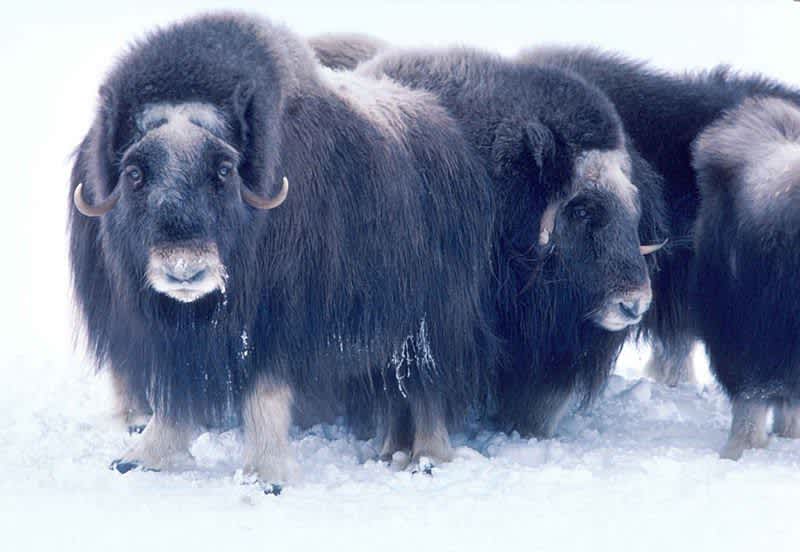Alaska Officials Approve Hunt of Musk Ox Stranded on Ice Floes
OutdoorHub Reporters 10.20.15

The Alaska Department of Fish and Game recently approved a resident hunting season for musk oxen near Nunivak and Nelson Islands after some of the animals became stranded on ice floes.
Alaskan musk ox are large, shaggy-haired animals that are well adapted to the cold, but the things that make them so resistant to frigid weather also make them horrible swimmers and unlikely to survive being trapped on ice.
“They’re not swimmers, they’re not going to swim,” Fish and Game biologist Patrick Jones told KYUK. “They’re going to ride that chunk of ice out until they starve or fall in the water and drown.”
The hunt was approved earlier in the year at a meeting by the Alaska Board of Game after biologists noticed the animals constantly trapped on floating ice. Residents from nearby hunting communities urged the board to adopt the regulation.
“For unknown reasons during winter, musk oxen occasionally wander onto sea ice adjacent to their terrestrial habitat and incidentally become stranded when marine conditions cause ice movements and floes to develop before musk oxen can reach safety,” officials said.
Since a large number of oxen in such cases die, the board decided that hunters should harvest the meat instead of letting it go to waste. Musk oxen are prized as game for their richly marbled meat, which is very desirable in the cold northern environment of the Nunivak region.
“A lot of people compare it to a goat or sheep. Also, it’s one of the few wild animals that has fat marbled through the meat,” Jones told the Associated Press. “It’s incredible. It’s really rich.”
Native hunters have a tradition of harvesting musk oxen on ice, wherein the animal is shot carefully to avoid it tumbling into the water. The hunters then board the floating platform on a boat and dress the animal right on the ice floe. It is a tradition that has stretched back generations, but these oxen are not native to Alaska. The state’s native musk ox population died out in the 1920s and the species was reintroduced a decade later using animals from Greenland.
There are currently about 740 musk oxen in Nunivak, well above the Department of Fish and Game’s long-term goal of 500 animals. Hunters who take musk oxen under this special regulation must target only the animals that are stranded on free-floating ice floes surrounded by saltwater. Photographic evidence of these conditions must be presented to wildlife officials, but no hunting tags are required.

